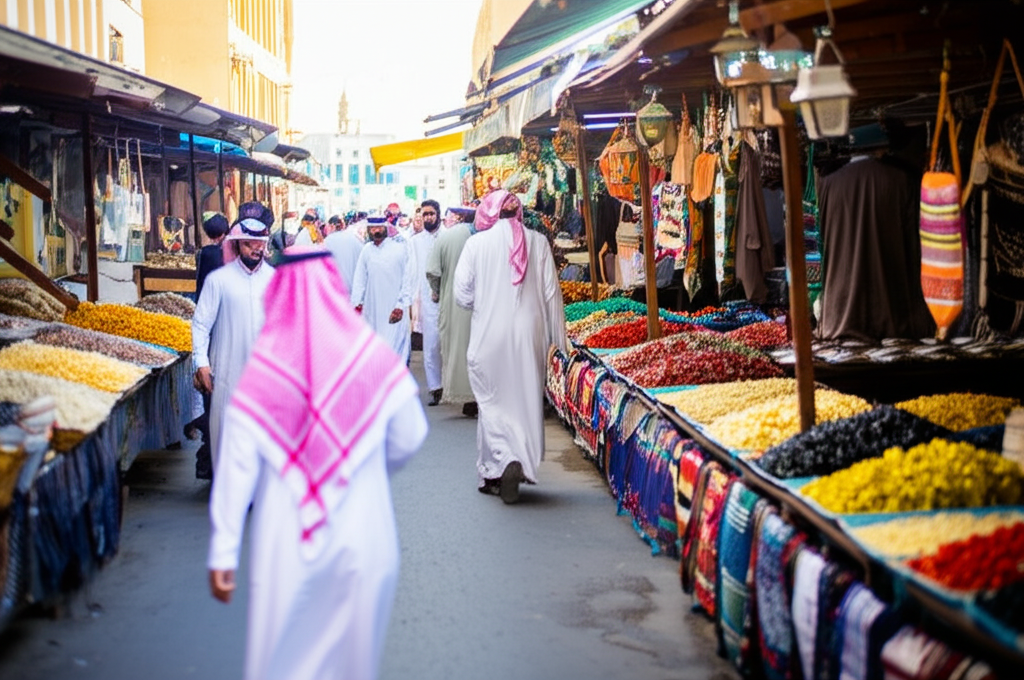Estimated reading time: 8 minutes
Key Takeaways
- Arabic is an ancient language widely used around the world.
- This language originated from the Arabian Peninsula and developed around the 7th century AD.
- Modern Standard Arabic (MSA) and local dialects have significant differences in pronunciation, vocabulary, and grammar.
- Arabic is the official language of 26 countries and is one of the six official languages of the United Nations.
- Saudi Arabic reflects Bedouin heritage and is strongly influenced by Islam.
Table of Contents
What is Arabic?
Arabic, also known as Modern Standard Arabic, is a language belonging to the Semitic group, originating from the Arabian Peninsula. This language formed around the 7th century AD, coinciding with the emergence of Islam when the Quran was written in classical Arabic. Arabic is not only the official language of 26 countries but also one of the six official languages of the United Nations. It is also the religious language of over 1.6 billion Muslims worldwide and has influenced other languages like Spanish and Persian through historical interactions.

Variants of Arabic
Arabic is not a homogeneous language but consists of many different dialects. Modern Standard Arabic (MSA) is used in formal contexts, media, and education, derived from classical Arabic and retains relative consistency across regions. Regional dialects include:
- Maghrebi Arabic (spoken in North Africa)
- Egyptian Arabic, widely recognized due to its use in media
- Levantine Arabic (spoken in Lebanon, Syria, Jordan, Palestine)
- Gulf Arabic, including dialects from Saudi Arabia, Qatar, and the United Arab Emirates
These dialects often differ significantly in pronunciation, vocabulary, and grammar, sometimes causing them to be mutually unintelligible.
Differences Between Modern Standard Arabic and Local Dialects
Modern Standard Arabic (MSA) is used in formal communication, religious texts, and official documents. Its grammar and vocabulary primarily stem from classical Arabic but also encompass modern terms. In contrast, local dialects are shaped by geography, history, and cultural exchanges. For example, the word “car” is sayyara in Gulf Arabic but arabeya in Egyptian Arabic. Grammar may also vary, including verb conjugation based on gender. The main difference between MSA and local dialects is that MSA is the common language for the entire Arab world, while dialects reflect regional identity and are used in everyday communication.

Arabic is the official or co-official language of 25 countries, including:
- Middle East: Saudi Arabia, the United Arab Emirates, Iraq, Yemen, etc.
- North Africa: Egypt, Morocco, Algeria, Tunisia, etc.
Additionally, Arabic is recognized as a minority language in countries like Iran and Turkey. In each country, both MSA and local dialects coexist, with MSA being prominent in education and media, while dialects are used for informal communication.
Saudi Arabic
Saudi Arabic, a dialect of Gulf Arabic, reflects the kingdom’s Bedouin heritage. There are differences in Saudi Arabic due to tribal and regional diversity, such as Najdi Arabic and Hijazi Arabic. Saudi Arabic is strongly influenced by Islam as this country is home to the two holiest sites of Islam, Mecca and Medina. This dialect includes unique expressions related to religious and cultural traditions.
Conclusion
Arabic is a vibrant and complex language with a rich history and significant cultural influence. From its origins on the Arabian Peninsula to its modern global impact, Arabic continues to connect millions of speakers across diverse regions. For those interested in learning more about Arabic, resources on its dialects, grammar, and cultural context are available.
If you want to delve deeper into Arabic, seek materials on its dialects, grammar, and cultural context.
Frequently Asked Questions
Below are some frequently asked questions about Arabic:
- How many countries use Arabic?
- What is the difference between Modern Standard Arabic and local dialects?
- What are the distinctive features of Saudi Arabic?
- Why is Arabic important in Islamic culture?
- Should I learn Arabic?
How many countries use Arabic?
Arabic is the official or co-official language of 25 countries worldwide. For more details, you can refer to this article.
What is the difference between Modern Standard Arabic and local dialects?
Modern Standard Arabic (MSA) is used in formal contexts, media, and education, while local dialects are used in everyday communication and reflect regional identity. For further understanding, you can read more at here.
What are the distinctive features of Saudi Arabic?
Saudi Arabic reflects Bedouin heritage and is strongly influenced by Islam, with unique expressions related to religious and cultural traditions.
Why is Arabic important in Islamic culture?
Arabic is the language of the Quran, the most important religious text in Islam, and the religious language of over 1.6 billion Muslims worldwide.
Should I learn Arabic?
Learning Arabic can bring many benefits, including a deeper understanding of Arab culture and history, as well as career opportunities in fields such as diplomacy, business, and education. For more information, you can refer to this article.

